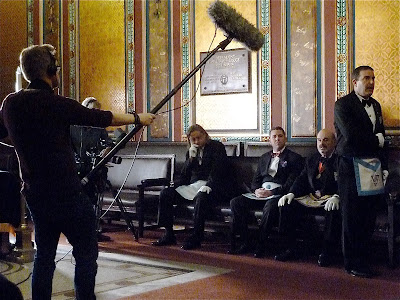 Robert Burns, Scotland’s most beloved historic Freemason, was born on this date in 1759. Among his most famous works is “A Man’s A Man for A’ That,” wherein he speaks of virtues in terms every Mason can understand, despite the Scots Gaelic tongue. It is dated 1795, the year before his death at age 37.
Robert Burns, Scotland’s most beloved historic Freemason, was born on this date in 1759. Among his most famous works is “A Man’s A Man for A’ That,” wherein he speaks of virtues in terms every Mason can understand, despite the Scots Gaelic tongue. It is dated 1795, the year before his death at age 37.
A Man’s A Man For A’ That
by Robert Burns
Is there for honest poverty
That hangs his head, an’ a’ that
The coward slave, we pass him by
We dare be poor for a’ that
For a’ that, an’ a’ that
The rank is but the guinea’s stamp
The man’s the gowd for a’ that
What though on hamely fare we dine
Wear hoddin grey, an’ a’ that
Gie fools their silks, and knaves their wine
A man’s a man, for a’ that
For a’ that, an’ a’ that
Their tinsel show an’ a’ that
The honest man, though e’er sae poor
Is king o’ men for a’ that
Ye see yon birkie ca’d a lord
Wha struts an’ stares an’ a’ that
Tho’ hundreds worship at his word
He’s but a coof for a’ that
For a’ that, an’ a’ that
The man o’ independent mind
He looks an’ laughs at a’ that
A prince can mak’ a belted knight
A marquise, duke, an’ a’ that
But an honest man’s aboon his might
Gude faith, he maunna fa’ that
For a’ that an’ a’ that
Their dignities an’ a’ that
The pith o’ sense an’ pride o’ worth
Are higher rank that a’ that
Then let us pray that come it may
(as come it will for a’ that)
That Sense and Worth, o’er a’ the earth
Shall bear the gree an’ a’ that
For a’ that an’ a’ that
It’s coming yet for a’ that
That man to man, the world o’er
Shall brithers be for a’ that

 Robert Burns, Scotland’s most beloved historic Freemason, was born January 25, 1759. Among his most famous works is “A Man’s A Man for A’ That,” wherein he speaks of virtues in terms every Mason can understand—despite the Scots Gaelic tongue! It is dated 1795, the year before his death at age 37.
Robert Burns, Scotland’s most beloved historic Freemason, was born January 25, 1759. Among his most famous works is “A Man’s A Man for A’ That,” wherein he speaks of virtues in terms every Mason can understand—despite the Scots Gaelic tongue! It is dated 1795, the year before his death at age 37.








































































